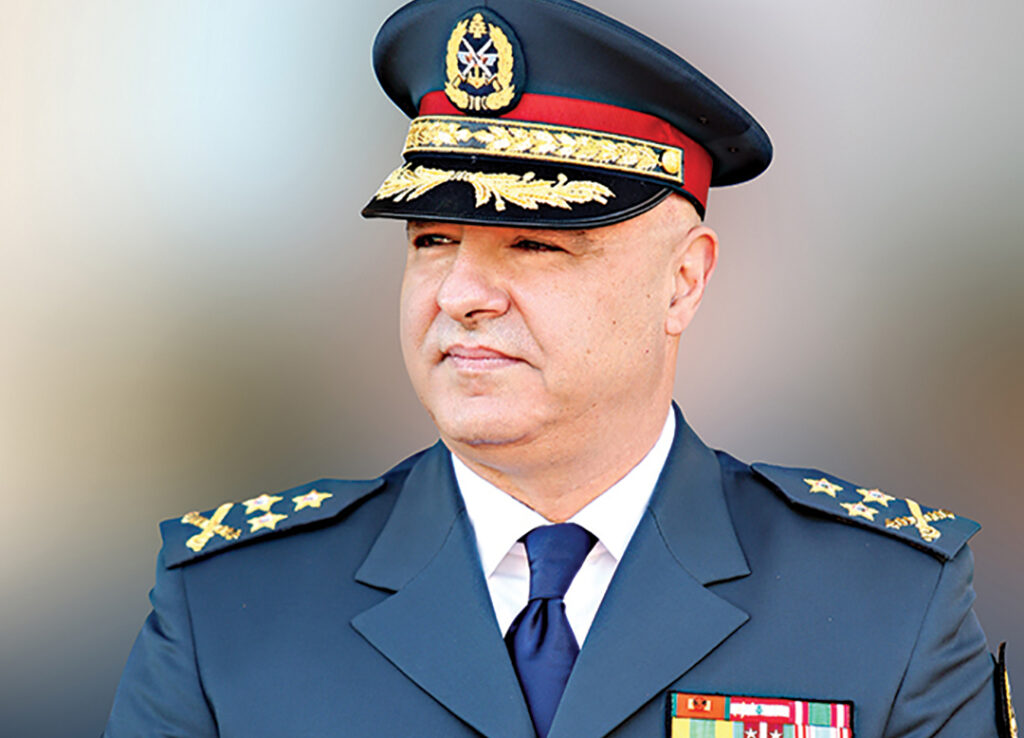I would like to express my sincere gratitude and appreciation to U.S. Central Command for inviting me to write the opening article for this issue, titled “Preventing a Resurgence of Violent Extremism.”
Lebanon’s geopolitical position, an important location on the eastern border of the Mediterranean Sea, serves as a bridge between both sides of the globe. However, although it is considered a source of wealth for Lebanon, geography has been, and still is, subject to various challenges, terrorism included.
The Lebanese Armed Forces’ (LAF) stated mission is to “defend the nation, preserve sovereignty and the state’s authority, protect the constitution, preserve security and stability, and contribute to providing social stability and development.”
Terrorism commonly refers to acts of violence that target civilians in pursuit of political or ideological aims. Lebanese society, however, is based on a culture of diversity, freedom and openness. Terrorism clearly opposes these values. Violence did not begin with the attacks of September 11, 2001, often referred to as 9/11, but that horrible day did change the world. No one could stand on the sidelines anymore; the conflict became global because the impact of terrorism was sensed everywhere.
The LAF reacted to the threat of terrorism before the world’s other armies and before terrorism became a global danger. In early 2000, the LAF fought a tough battle against a terrorist group that was holed up around Jouroud al-Doniyeh (the outskirts of Doniyeh) in northern Lebanon. The enemy was equipped with heavy and medium weapons and planned to establish an extremist emirate in northern Lebanon. The LAF successfully accomplished the mission and captured many terrorists.
In 2007, the LAF again fought a long battle, this time against Fatah al-Islam in Nahr el Bared camp, in northern Lebanon. The terrorist organization was planning a take over the north as a base to spread terrorism to other parts of the country. This battle ended with the elimination of a large number of terrorists.
In 2013, a terrorist group led by Ahmad al-Assir in the Saida region in southern Lebanon attacked military posts in the area. The LAF fought back and managed to eliminate the threat.
Dangerous terrorist organizations participating in Syrian events, the most prominent of which were Daesh and Jabhat al-Nusrah, used the northern and the northeastern borders between Lebanon and Syria to dispatch booby traps, carry out rocket attacks and launch missiles into Lebanon.
These attacks included an incursion in 2014 into the town of Arsal on the eastern border and attacks on nearby troops with the aim of seizing the area from the eastern mountains to the city of Tripoli on the seacoast. The LAF was on guard for such a move. It carried out a large-scale attack and expelled the terrorists from Arsal.
Afterward, the Lebanese Army tightened its grip on the terrorists almost daily, pounding them with heavy fire. It carried out special operations in the area of deployment, which paved the way for the battle of Fajr al-Jouroud (Dawn of the Outskirts) in 2017.
The battle tested the LAF, which launched a series of aerial and ground attacks against Daesh on the northeastern border. Troops cornered surviving terrorist fighters into a valley along the Syrian border, driving them out of Lebanese territory.
The battle of Fajr al-Jouroud was one of the largest in LAF history which two brigades, four regiments and one special operations unit. Recent technology, from drones to smart – and laser-guided weapons such as the Hellfire rockets benefited LAF. It devised a strategy of integrating air and artillery platforms, firing the old copperhead 155 mm artillery shells donated by the United States. Those shells were considered the secret weapon of this battle. At the end of the battle, the LAF recovered the remains of nine soldiers kidnapped by Daesh near the Syrian border in August 2014.
The LAF was first among the region’s armies to achieve – alone – victory over Daesh. Yet despite this great victory, the danger of terrorism remains in Lebanon. LAF constantly monitors terrorist cells and uses preemptive military security operations to eliminate them in their formative stages. The above-mentioned battles cost the LAF 230 martyrs.
Undoubtedly, the success of combatting terrorism is due to the fighting qualities and high morale of the LAF and their will to fight, the support of the people and their rejection of terrorism and extremism, as well as the quality assistance provided by many friendly countries, led by the United States, which successfully contributed to modernizing and strengthening the LAF as a fighting force.
The strength of the LAF — and the local and international confidence in its national role — is the result of its dedication to its military and patriotic mission and its faith in the aspirations of its people. The high quality and the large amount of support provided by friendly countries, mainly the U.S., has helped Lebanon become more resilient and enhanced regional and international stability.
Gen. Joseph Aoun
Commander, Lebanese Armed Forces

